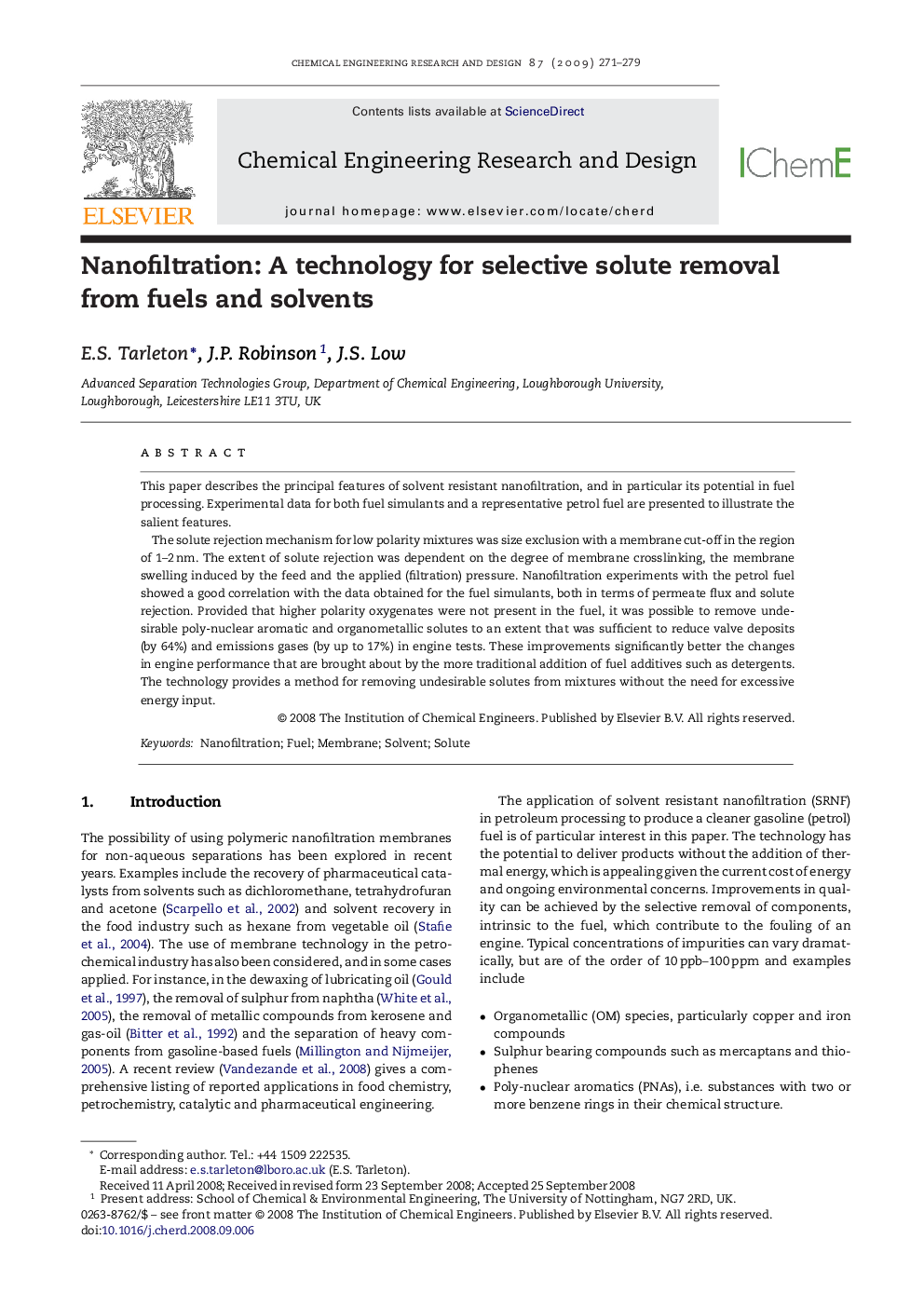| Article ID | Journal | Published Year | Pages | File Type |
|---|---|---|---|---|
| 621226 | Chemical Engineering Research and Design | 2009 | 9 Pages |
Abstract
The solute rejection mechanism for low polarity mixtures was size exclusion with a membrane cut-off in the region of 1-2Â nm. The extent of solute rejection was dependent on the degree of membrane crosslinking, the membrane swelling induced by the feed and the applied (filtration) pressure. Nanofiltration experiments with the petrol fuel showed a good correlation with the data obtained for the fuel simulants, both in terms of permeate flux and solute rejection. Provided that higher polarity oxygenates were not present in the fuel, it was possible to remove undesirable poly-nuclear aromatic and organometallic solutes to an extent that was sufficient to reduce valve deposits (by 64%) and emissions gases (by up to 17%) in engine tests. These improvements significantly better the changes in engine performance that are brought about by the more traditional addition of fuel additives such as detergents. The technology provides a method for removing undesirable solutes from mixtures without the need for excessive energy input.
Related Topics
Physical Sciences and Engineering
Chemical Engineering
Filtration and Separation
Authors
E.S. Tarleton, J.P. Robinson, J.S. Low,
